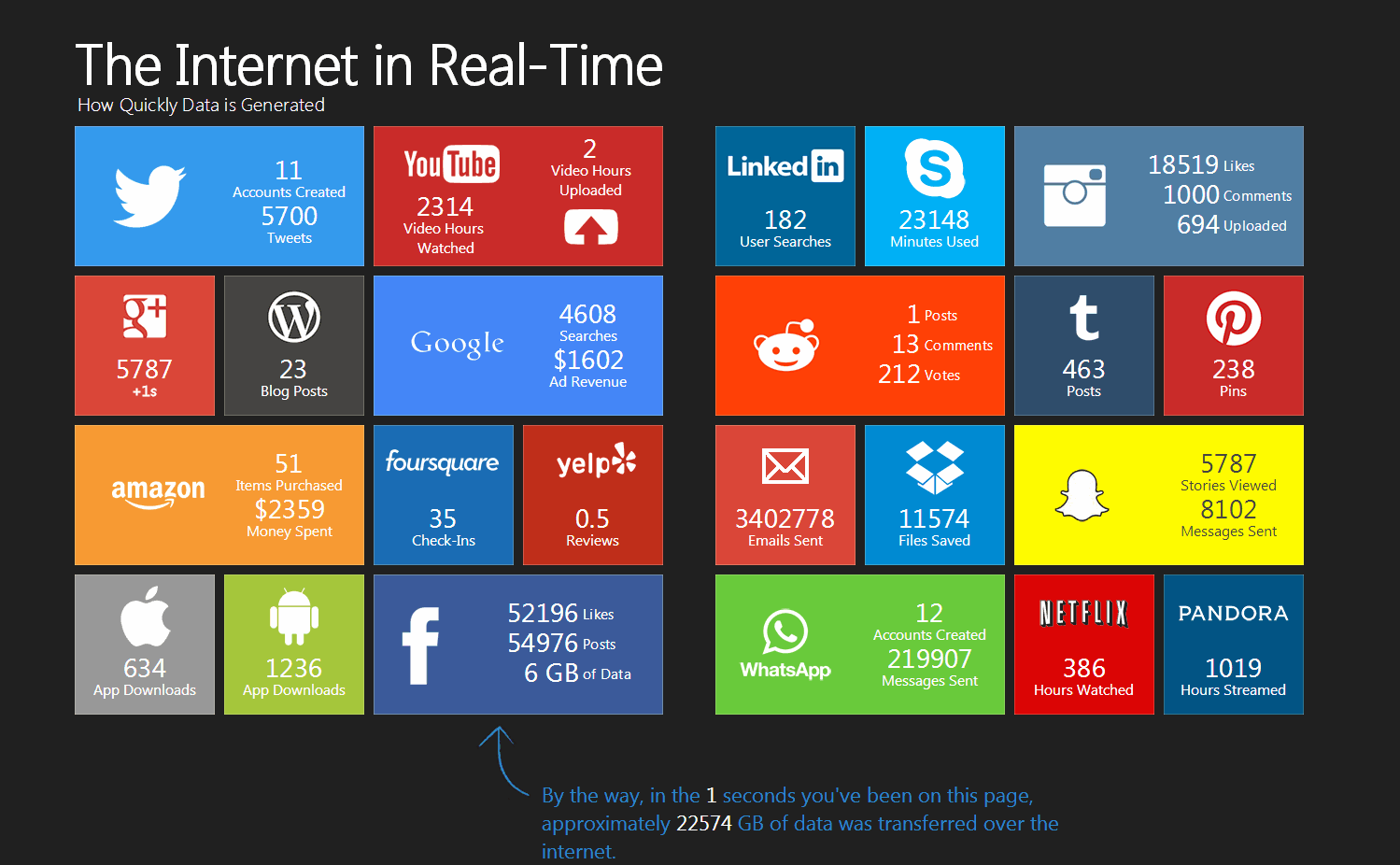 Fun fact about Katrina you probably didn’t know: I was the president of my college sorority. Yeah, I know, if you know me today, you’re thinking, “yeah, right,” if for no other reason than my physical appearance.
Fun fact about Katrina you probably didn’t know: I was the president of my college sorority. Yeah, I know, if you know me today, you’re thinking, “yeah, right,” if for no other reason than my physical appearance.
But let’s just say I’ve grown into my style (and skin) in the intervening years; back then, if we were to meet on the street, bet you anything there’s no way in hell even some of my closest friends would ever recognize me.
Not in a million years.
See, back then, I had long, curly hair that I spent way too much time worrying about. This is hard to admit, but you’d be hard pressed to find me without my letter jacket on.
Don’t judge. I mean, it’s not like I said “what if?” or did that Kardashian whiny voice or wore Bebe or anything that extreme.
I mean, I just wanted to fit in, really. Who doesn’t, right? But the thing is, fitting in didn’t actually fit in with our sorority’s reputation, nor our culture.
Getting Into The Habit.
 When I tell people I was in a sorority (much less the Queen Bee), I’ve always gotten a range of responses from a confused “really? You?” to a “why the hell would you ever subject yourself to that shit?”
When I tell people I was in a sorority (much less the Queen Bee), I’ve always gotten a range of responses from a confused “really? You?” to a “why the hell would you ever subject yourself to that shit?”
The perception, of course, is that being part of a “sisterhood” of over forty women was kind of a pain in the ass, for which I, as the ringleader, was ultimately to blame.
People instantly think I was one of those girls who chose backstabbing over books, or spent more time at flirting at frat parties than I did in class. And they’re partially right.
I mean, it was an arduous ordeal most of the time, particularly because my presidential duties involved being the accountable party any time anyone in the whole house messed up. And hey, we were sorority girls. We can’t all be the brightest bulbs in the box, right? But it’s not like we were the ladies of Legally Blonde, either.
What people associate with sororities is thanks in large part to pop culture’s presentation of pedicures, pink and parties when, in fact, maintaining an official campus-recognized sorority was one of the hardest jobs I’ve ever had in my life – and simply being a member wasn’t easy, either.
To stay in the sorority, everyone was required to have a GPA of at least 2.5 or higher, attend weekly mandatory meetings and periodic philanthropy or sisterhood building events, and to top it all off, pay dues for the privilege. This emphasis on dues, which more or less were our sole means of sustaining our sisterhood, meant that we actually operated a lot less like a social organization than a corporation. And at no time was that more true than when Rush Week rolled around.
OK, let me take a step back here. If you didn’t attend a college with an active Greek scene, or did, but avoided it like the plague, let me explain to you how recruiting for a sorority or fraternity works on most campuses. Each house starts by looking at our total membership, who would be leaving (through graduation, transfer or just plain dropping out), and then figuring out how many new members we needed to cover that projected deficit in our precious dues.
At my sorority, we were limited to 50 total members, and were prohibited from having a single member more than our quite limited allotment, putting an emphasis on selectivity over availability. And from there, we’d figure out how to get the best rush class we could by kicking off our recruitment planning process.
These included a series of increasingly elaborate events, intricately coordinated outfits and rituals, both esoteric and mundane, that were coordinated with absolute precision and comprehensive planning.
But there was a catch: unlike fraternities, sororities couldn’t have booze – like, zero, nada, zilch – at any rush related events, meaning we couldn’t just Shanghai our way to sisterhood. We had to be smart about recruiting, and even before Pinterest, learned to be thoughtful and crafty about the strategies we employed in the process.
Rescue Me.
 Each event on our packed schedule, however, took more than just choosing some theme and a costume – we had to market the hell out of them, too.
Each event on our packed schedule, however, took more than just choosing some theme and a costume – we had to market the hell out of them, too.
There’s no Greek Life program where someone leads everyone interested in a sorority over to your house and introduces you to your prospective pledges.
Nope, we had to find the girls to fill our quota all by our damned selves, and that meant marketing the hell out of ourselves.
We had posters hanging everywhere, custom T-Shirts and fliers and all the stuff that used to be a standard part of sorority rush before Facebook made all of that stuff more or less moot. But let’s face it – joining a sorority, any sorority, is a really big decision, and some poster isn’t going to make or break a potential new pledge from accepting a bid.
There’s no emotional tie-in with events like ice cream socials or brunches or house tours. That doesn’t get people to pledge. You want someone to make a commitment, you’ve to to inspire them to go deeper. Way deeper.
A few of the wiser ones among us realized that to recruit college girls to our events without the inducement of free alcohol, unlike the fraternities also competing for a limited supply of available women. I can’t say I necessarily blame them for choosing a kegger over sun dresses and small talk.
But finding the few, the proud, the ones who’d actually say “yes” and stick to that commitment through commencement? In sororities, as in companies, success really came down to building and executing a referral strategy.
We started by going on a hunt not for just any available and unaffiliated undergraduate woman, but really working our asses off to find the ones who we thought had the potential to be great members and future leaders of our sorority – keepers of our legacy, more or less.
We weren’t just looking for some basic, ratchet, everyday kinda girl – we needed people we could trust implicitly. We were looking for our life long sisters. That sounds corny, but it’s a pretty big consideration during the screening and selection process.
We recruited our members continuously, squeezing every hour out of our allotted week to pitch potential pledges. We’d recruit in our classrooms, our dorm rooms, hell, even those fraternity parties we were ostensibly competing with for women. But there were a whole lot of them there, turns out – and in those cases, we didn’t have to supply the booze (as a bonus).
That said, we were also careful to find girls with that right mix of being able to have fun while also remaining a functional, respectful representative of our house and its members.
 Just A Touch of Love, Everyday.
Just A Touch of Love, Everyday.
Sorority rush was my first ever recruiting experience, and as you can imagine, it was, uh, interesting (to say the least). But looking back on that time, I’m really grateful I learned early on some of the most critical lessons anyone in the business of hiring needs to know.
Lessons like which candidates aren’t worth the time or effort; the importance of individual personalities but also interpersonal dynamics, and how essential referrals and networks really are. It taught me to trust in the judgement of others, and to listen to my gut when it came to acting for the greater good.
I learned that every decision we made would impact the lives of 40 independent minds, which is why, when it came down to picking new members, we had to do our best to act as one and look out for each other. This experience also taught me the true cost of bad recruiting, a painful reminder for which I was constantly repaid with a barrage of daily complaints and drama that resulted from making the wrong decision.
In my case, it made my life a living hell, occasionally. At least at work, you can go home. Not so when you’re the president of a sorority. Those are some high stakes right there, my friends.
Sorority rush taught me about more than recruiting, of course; it also taught me about the power of building real, authentic connections with people, the importance of being there for others and how true sisterhood meant putting the needs of the group before your own, no matter how hard that sometimes could be. Those are invaluable lessons, and that’s what I think people miss when they talk about “sororities” as if they were the punchline to some dumb blonde joke.
Sororities are just the structure, but it’s the sisterhood, not the organization itself, that really makes this such a special, and meaningful, experience. In a sorority, you get immersive lessons in things like respect, trust, love, honor and pride wrapped up in the tidy bow of an umbrella organization and bundled together in the hardest crash course you can have in college.
Let’s just say, going Greek takes a hell of a lot more out of you – and gives a hell of a lot more back – than joining some intramural sports team or study group.
Ain’t No Mountain High Enough.
 While I might no longer look like a sorority girl, much less the head of the house, I will still, to this day, proudly recruit on behalf of my chapter and my sorority.
While I might no longer look like a sorority girl, much less the head of the house, I will still, to this day, proudly recruit on behalf of my chapter and my sorority.
If I have a daughter, they will be granted legacy status, and I’d probably press them to take advantage of their automatic membership – because if they got half as much out of it as I did, it’d all be worth it.
I didn’t make a lot of great decisions in my late teens and early twenties, but joining and rising through the ranks of my sorority were among the best of them. They’re still paying dividends.
With this kind of experience, you don’t need to give me gift cards or incentives to motivate me to actively generate referrals – unlike most company referral programs, I want to do my part.
There’s no need to motivate me any more than the support and sisterhood I was able to get by being a member of my sorority. I do know that it’s not a great fit for everyone, but it’s an experience that everyone who’s serious about leadership and family at this pivotal period of personal progression should have.
That’s powerful. And that right there, that’s what people are really talking about when they talk about creating a culture, specifically, recruiting for culture fit. When I think about what this might entail, I realize the entire construct of culture is inherently a feeling, some sort of subconscious sense of belonging and conscious sense of pride that’s nothing you could ever distill into a mantra, mission or motto.
You can’t draw culture on a whiteboard, nor stick culture on a spreadsheet. It’s a living, breathing and ultimately profound feeling that you can’t quite describe, but you know it’s there when the fit is right. And when it is, it’s pretty awesome. Now, I’m not crazy enough to think that culture is going to create some utopia at the office, an Eden for employees. Work is still work, and it still sucks sometimes.
But if work doesn’t suck most of the time, and occasionally, you actually like it or find personal pride or edification in it, guess what? You’re doing better than almost everyone else out there, 4 out of 5 of whom are disengaged or actively disengaged. Disengagement is where culture goes to die, which is why so many of us feel nothing more for our jobs than the paychecks they provide. It’s a living, but it’s your life, too.
The way we talk about company culture and hiring for fit today makes it sound almost mythical, like some elusive self-help serum that will help drive revenues, productivity and morale.
Culture change is seen as a silver bullet, and in fairness, I think that part of the value we place on company culture comes from the fact that so few companies have any cohesive culture at all. Even fewer have a culture that’s going to make an impact on their business or bottom line. Hope springs eternal, but ping pong tables and cafeteria slides aren’t culture. Don’t fool yourselves – culture isn’t a place or a perk. It’s a feeling.
And it feels like home.
Just A Touch of Love Every Day: 3 Sorority Secrets for Company Culture Creation.

Now, when I think back to my time in the sorority, I can point out to the things that made it so much more than a social club, but part of the very fabric of our lives, our identities and our interpersonal relationships. It felt kind of like a family – and that is, at the end of the day, what I think companies really need to do to make culture fit work. You build a team that wants to be there, and is always there for each other, even when they’re not on the clock.
This isn’t easy, but neither was running a sorority. But I learned some pretty important lessons about culture along the way, and many of them are as relevant today as they were back in the day.
Even if I no longer have long hair and would kick my own ass if I saw myself in a letter jacket in public. Of course, come to think of it, I’ve really just replaced that with a branded hat and t-shirt. Of course, rush really isn’t all that different from recruiting – particularly when it comes to culture fit.
Here are some sorority secrets for culture creation every hiring pro should know.
1. Relationships Matter Most.
Throughout the ‘new member’ process, sororities and fraternities match each with an older member to help them navigate their way through the pledge process,. In my sorority, as each new member begins their path towards full fledged sisterhood, they are assigned yet another mentor – called a “big sister” – who shares responsibility for their little sister’s growth and guidance throughout their sorority experience.
This, of course, creates the kind of familial bond that makes sorority life so special – and in turn, provides each with an essential support structure and shared accountability for success. A little reciprocity goes a long way in building and maintaining a meaningful relationship. Big sisters and little sisters choose each other based on just a few meetings up front, but the bond that forms is meant to last not just until graduation, but for a lifetime. It’s a big decision for both parties.
Companies should consider setting up a mentorship program where employees are matched with more experienced employees or leaders who can help not only facilitate a smooth and successful onboarding process – making sure every new employee has someone they can go to for insights, information or simply support as they ease into their new roles, modeling and reinforcing company culture in the process. That same mentorship program should also evolve over the employee lifecycle as employees develop, grow and advance throughout the organization. These are the ties that bind – and increase employee morale and retention, too.
One of the interesting parts about the ‘big sister-little sister’ model is that it creates a sort of lineage, one that ties individual identity to the greater history and legacy of the organization by creating a sort of family tree that creates deep roots while continuing to branch out and grow into a much larger network based on these shared connections.
Eventually, new employees will move onto mentorship roles at some point in their tenure, creating a cyclical system of support that’s built to last from hire to retire, as it were. This builds a dynamic company culture built not on function or on ‘fun,’ but on relationships, instead. Which is really what the construct of culture is all about.
2. Conversations Count.
Sure, you’ve got to communicate to your colleagues and coworkers since you’re all officially part of the same team, but I’m telling you right now, when it comes to collaboration, everything from meetings to project planning should happen in an environment where ideas and insights are democratized, not dictated. This means providing forums – whether through periodic meetings or as part of your everyday process – where every employee has the opportunity to speak (in the right context, of course) and help drive decision making by providing their unique voice and perspective to each respective situation.
Instead of running meetings with formal agendas, designated speakers and a regimented hierarchy where the boss drives the discourse, it’s important to provide opportunities for teams to come together, face-to-face, and have meaningful conversations where every employee’s voice is heard. Which is really what every employee really wants in the first place.

3. Fund The Connection.
While a successful mentor relationship doesn’t necessarily require anything but mutual commitment, respect and time, investing in this sort of relationship building by putting a little bit of budget behind your program can help ensure employee engagement and successful outcomes.
A little bit of money can go a long way in building bonds (and informing culture); it might seem silly, but little things like parties, fun activities or peer-driven recognition and reward programs mean that your employees aren’t just bonding over work, but shared interests, affinities and experiences. This is the sort of stuff that makes relationships work at work (and outside the office, too).
4. Roll Out the Red Carpet.
They say recruiting doesn’t stop at onboarding – and they’re right. Sororities know how essential (and impactful) those first few days with new members can be, and what happens during that introductory period can have a profound impact on their entire outlook towards the organization and their overall experience.
When our sorority held our initiation ceremonies, we made sure to roll out the red carpet and make sure our members – new and existing – knew that this event was something special. We told them so, and it became a central part of our shared experience, an integral component of our shared rites and rituals. This wasn’t just something that we had to go through every semester – it was truly an event, where we did everything from giving gifts to new members to throwing parties in their honor – whatever it took to make them feel welcome, at home and a part of our family.
When it comes to building a culture that works, success has nothing to do with inducements like gift cards or spot bonuses or some other half-assed incentives program, gamification tool or any of the other stuff that might temporarily motivate your people, but never actually engages them over the long term.
Culture is created because of lasting relationships, not temporal rewards. The reward comes in the fact that employees not only feel an attachment to your company and a commitment to your culture, but pride in where they work and what they do.
Which is what the construct of culture is really all about, really – as every sorority girl already knows. Like, duh.
 If there’s one recruiting anthem we’ve all probably heard before, it’s these three, seemingly simple words: “Recruiting is Marketing.”
If there’s one recruiting anthem we’ve all probably heard before, it’s these three, seemingly simple words: “Recruiting is Marketing.” Let’s think back 25 years ago, when both of these departments were in the early throes of their development. Before the dawn of marketing systems and the emergence of the web, marketing’s impact was nebulous at best. In principle, it wasn’t vastly different from what we do today:
Let’s think back 25 years ago, when both of these departments were in the early throes of their development. Before the dawn of marketing systems and the emergence of the web, marketing’s impact was nebulous at best. In principle, it wasn’t vastly different from what we do today: Recently, one of the most exciting developments in marketing technology is around predictive lead scoring. We use Infer here at Jobvite, but there are a number of others like Mintigo and Lattice Engines that offer comparable technology. And true-to-form, this same technology is now in its infancy in talent acquisition.
Recently, one of the most exciting developments in marketing technology is around predictive lead scoring. We use Infer here at Jobvite, but there are a number of others like Mintigo and Lattice Engines that offer comparable technology. And true-to-form, this same technology is now in its infancy in talent acquisition.
 About the Author: Matt Singer is Jobvite’s fearless marketing leader. He’s officially been in marketing and sales for the past 15 years, but informally for 30+ years starting with cookie, lemonade, and lawn mowing businesses in his neighborhood at the age of 8.
About the Author: Matt Singer is Jobvite’s fearless marketing leader. He’s officially been in marketing and sales for the past 15 years, but informally for 30+ years starting with cookie, lemonade, and lawn mowing businesses in his neighborhood at the age of 8.


 Fun fact about Katrina you probably didn’t know: I was the president of my college sorority. Yeah, I know, if you know me today, you’re thinking, “yeah, right,” if for no other reason than my physical appearance.
Fun fact about Katrina you probably didn’t know: I was the president of my college sorority. Yeah, I know, if you know me today, you’re thinking, “yeah, right,” if for no other reason than my physical appearance. When I tell people I was in a sorority (much less the Queen Bee), I’ve always gotten a range of responses from a confused “really? You?” to a “why the hell would you ever subject yourself to that shit?”
When I tell people I was in a sorority (much less the Queen Bee), I’ve always gotten a range of responses from a confused “really? You?” to a “why the hell would you ever subject yourself to that shit?” Each event on our packed schedule, however, took more than just choosing some theme and a costume – we had to market the hell out of them, too.
Each event on our packed schedule, however, took more than just choosing some theme and a costume – we had to market the hell out of them, too. Just A Touch of Love, Everyday.
Just A Touch of Love, Everyday. While I might no longer look like a sorority girl, much less the head of the house, I will still, to this day, proudly recruit on behalf of my chapter and my sorority.
While I might no longer look like a sorority girl, much less the head of the house, I will still, to this day, proudly recruit on behalf of my chapter and my sorority.




 Recruiting can be expensive if you are not careful. I am the Director of Talent Acquisition at
Recruiting can be expensive if you are not careful. I am the Director of Talent Acquisition at  ve saved an average of two hours per position by not having to spend an inordinate amount of time with unqualified candidates on the phone.
ve saved an average of two hours per position by not having to spend an inordinate amount of time with unqualified candidates on the phone.


 he overlap between recruitment and inbound marketing has been widely discussed, and rightfully so; they’re more or less same exact stuff, different purchasing decision.
he overlap between recruitment and inbound marketing has been widely discussed, and rightfully so; they’re more or less same exact stuff, different purchasing decision.
 So if you don’t know what it takes to make it as an employee at your company, then you’re already going to fail, because candidates can spot BS a mile away, and they’re going to run from your Potemkin village the moment they realize there’s nothing behind the career site facade but another worthless recruiter who doesn’t even get what they do, much less why they should make a major life change and put so much on the line by switching jobs and making a move in the first place.
So if you don’t know what it takes to make it as an employee at your company, then you’re already going to fail, because candidates can spot BS a mile away, and they’re going to run from your Potemkin village the moment they realize there’s nothing behind the career site facade but another worthless recruiter who doesn’t even get what they do, much less why they should make a major life change and put so much on the line by switching jobs and making a move in the first place. The easiest way to segment your prospects in inbound marketing is by starting at the very beginning, as it is a very good place to start. It’s also imperative if you want to truly understand who it is you’re talking to and who you need to be targeting.
The easiest way to segment your prospects in inbound marketing is by starting at the very beginning, as it is a very good place to start. It’s also imperative if you want to truly understand who it is you’re talking to and who you need to be targeting. This is all critical information not only for building targeted lead lists, but also, knowing who not to send certain content to.
This is all critical information not only for building targeted lead lists, but also, knowing who not to send certain content to. About the Author: Adriano Corso is currently the Founder and Head of Solutions with
About the Author: Adriano Corso is currently the Founder and Head of Solutions with 
 While I’m generally pretty good at reading the M&A market in the HR Technology space, I admit that the announcement that venerable tech titan
While I’m generally pretty good at reading the M&A market in the HR Technology space, I admit that the announcement that venerable tech titan  It’s a combination of two incredibly unsexy brands who have seen better days, and whose combination seems certainly predicated less on the resulting alliance than the primary competition both companies face, which, obviously, comes from the company headquartered across the street from the LinkedIn Death Star in Mountain View.
It’s a combination of two incredibly unsexy brands who have seen better days, and whose combination seems certainly predicated less on the resulting alliance than the primary competition both companies face, which, obviously, comes from the company headquartered across the street from the LinkedIn Death Star in Mountain View.
 Of course, this was alluded to in the official announcement of the acquisition, and seems to be the most obvious next step for these two companies.
Of course, this was alluded to in the official announcement of the acquisition, and seems to be the most obvious next step for these two companies.


 It is official. On June 13, 2016 Microsoft and
It is official. On June 13, 2016 Microsoft and 
 “The LinkedIn team has grown a fantastic business centered on connecting the world’s professionals,” Nadella said. “Together we can accelerate the growth of LinkedIn, as well as Microsoft Office 365 and Dynamics as we seek to empower every person and organization on the planet.” “Today is a re-founding moment for LinkedIn. I see incredible opportunity for our members and customers and look forward to supporting this new and combined business,” said Hoffman. “I fully support this transaction and the Board’s decision to pursue it, and will vote my shares in accordance with their recommendation on it.”
“The LinkedIn team has grown a fantastic business centered on connecting the world’s professionals,” Nadella said. “Together we can accelerate the growth of LinkedIn, as well as Microsoft Office 365 and Dynamics as we seek to empower every person and organization on the planet.” “Today is a re-founding moment for LinkedIn. I see incredible opportunity for our members and customers and look forward to supporting this new and combined business,” said Hoffman. “I fully support this transaction and the Board’s decision to pursue it, and will vote my shares in accordance with their recommendation on it.”
 The first time I used Waze was a revelation. This was not because of the network effects it generates, but more importantly, because of how transparently the application’s user interface (UI) exposes them.
The first time I used Waze was a revelation. This was not because of the network effects it generates, but more importantly, because of how transparently the application’s user interface (UI) exposes them. I know what you’re thinking: “
I know what you’re thinking: “ A quick look at the consumer software landscape reveals the increasing ubiquity of learning loops, which have more or less taken over the category – Waze, Yelp, Tinder, Netflix, Amazon, Facebook, you name it, if it’s tech, its business model was likely built on the basis of leveraging machine learning based on user generated information to provide better experiences for those users.
A quick look at the consumer software landscape reveals the increasing ubiquity of learning loops, which have more or less taken over the category – Waze, Yelp, Tinder, Netflix, Amazon, Facebook, you name it, if it’s tech, its business model was likely built on the basis of leveraging machine learning based on user generated information to provide better experiences for those users.
 In both cybersecurity and recruiting, companies in the learning loop realize concrete advantages that have a tangible impact on their competitive standing, often almost immediately after initial adoption.
In both cybersecurity and recruiting, companies in the learning loop realize concrete advantages that have a tangible impact on their competitive standing, often almost immediately after initial adoption. Now, I’d like to point out that learning loops already integrated into our consumer software today goes way beyond discovering some cool band or figuring out what movie you’re in the mood to watch or which online match is going to be the most compatible in a long term relationship.
Now, I’d like to point out that learning loops already integrated into our consumer software today goes way beyond discovering some cool band or figuring out what movie you’re in the mood to watch or which online match is going to be the most compatible in a long term relationship.


 *:
*: -/NOT:
-/NOT:


 We have not heard from Monster in a while. I have a feeling that is about to change. On June 8, 2016, Monster announced that is has purchased
We have not heard from Monster in a while. I have a feeling that is about to change. On June 8, 2016, Monster announced that is has purchased  The Jobr app uses a ‘Tinder-like’ model, allowing job seekers to quickly connect with or dismiss job opportunities by swiping right or left on job postings and then apply to those jobs. Jobr also provides tools for recruiters to manage and interact with applicants. Jobs posted on Monster are already featured on the Jobr app but now will be integrated with the monster global talent platform. This acquisition will also allow Monster to have more of a Global presence.
The Jobr app uses a ‘Tinder-like’ model, allowing job seekers to quickly connect with or dismiss job opportunities by swiping right or left on job postings and then apply to those jobs. Jobr also provides tools for recruiters to manage and interact with applicants. Jobs posted on Monster are already featured on the Jobr app but now will be integrated with the monster global talent platform. This acquisition will also allow Monster to have more of a Global presence.
 When I started my recruiting career, I was bombarded with recommendations for the “must-have” tools I needed to excel in this field. Even now, I receive messages almost daily asking if I’m interested in a new tool to add to my recruitment strategy. Don’t get me wrong. I love me a shiny new object. However, when it boils down to trench recruiting, I find myself relying on what some describe as ‘old school’ recruiting tools.
When I started my recruiting career, I was bombarded with recommendations for the “must-have” tools I needed to excel in this field. Even now, I receive messages almost daily asking if I’m interested in a new tool to add to my recruitment strategy. Don’t get me wrong. I love me a shiny new object. However, when it boils down to trench recruiting, I find myself relying on what some describe as ‘old school’ recruiting tools. The Phone
The Phone Jose Watson is a market recruiter with Lowe’s Home Improvement and supports full cycle recruiting by working with HR Managers to develop the market recruiting strategy (internal and external).
Jose Watson is a market recruiter with Lowe’s Home Improvement and supports full cycle recruiting by working with HR Managers to develop the market recruiting strategy (internal and external).


 add a hashtag the pinned image to attract attention to the pin and my board.
add a hashtag the pinned image to attract attention to the pin and my board. Instagram
Instagram
 Lastly, Facebook is my favorite source for recruiting and engaging with my target talent audience. Facebook is such a great tool because there are so many users ; a
Lastly, Facebook is my favorite source for recruiting and engaging with my target talent audience. Facebook is such a great tool because there are so many users ; a Track Hashtags:
Track Hashtags:  Use Quotes.
Use Quotes. Terry Hall is a Senior Recruiter at Providence Health & Services which is headquartered in the Seattle-Metro area. Terry is a Marine Corps Veteran and has over a decade of recruiting experience, starting her career in agency recruiting running a desk for Select Personnel and Manpower Professional Finance before making the move in-house, where she has held strategic talent roles for Washington Mutual Corporate Human Resources, Amazon, and T-Mobile.
Terry Hall is a Senior Recruiter at Providence Health & Services which is headquartered in the Seattle-Metro area. Terry is a Marine Corps Veteran and has over a decade of recruiting experience, starting her career in agency recruiting running a desk for Select Personnel and Manpower Professional Finance before making the move in-house, where she has held strategic talent roles for Washington Mutual Corporate Human Resources, Amazon, and T-Mobile.




